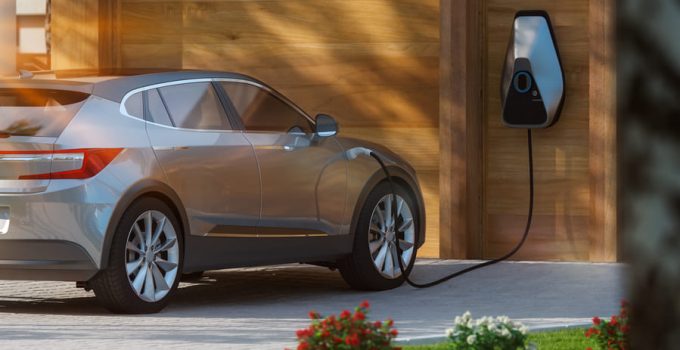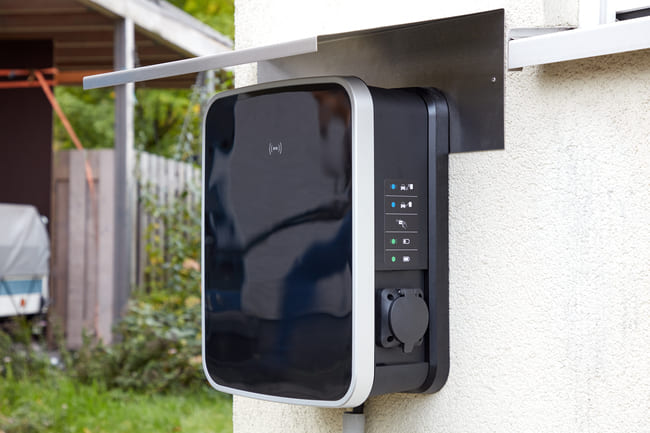
One of the advantages of an electric vehicle over diesel and petrol vehicles is that you don't have to drive to the gas station, you can charge the car directly in the parking lot or even at home. This saves time that can be used to do many other things. Special charging stations, fast chargers or wall boxes are available for charging electric cars in public spaces. At home, however, normal household sockets are often still used to charge electric cars, although this not only takes much longer than charging at a special charging station, it is also more dangerous because there is a risk of cable fires and short circuits. Therefore, charging stations for electric cars are also recommended for use at home, so that the normal socket is only used in extreme emergencies.
Contents
Advantages of a charging station at home
No matter how tempting the emergency charging cable in your trunk might be, it really should only be used for emergencies to ensure safe charging of your electric car. Because neither the Schuko socket nor the associated electrical installation are designed for long charging under high loads.

This can cause the outlet, plug, and power cord to overheat , which in the worst case can lead to a cable fire. This is why vehicle manufacturers and independent test institutes also recommend charging electric cars at a charging station specially designed for this purpose.
But apart from the safety aspect, using a charging station has other advantages:
- Faster charging time: a household socket has just 2.3 kW, whereas the wall box even offers up to 22 kW thanks to the three-phase connection. Therefore, electric cars can be charged on average 4.5 times faster on wall boxes than on a Schuko socket. Here, charging an electric car with a battery capacity of 60 kWh would take almost 25 hours.
- Better efficiency through higher charging performance: The unnecessary power consumption by secondary consumers, such as battery monitoring, is also significantly reduced by a shorter charging time. In addition, the chargers lose less energy due to the higher charging capacity, which is why the charging station pays off financially after a few years.
- Additional time savings: no need to go to the gas station. You arrive home, plug in and your car charges.
Function of a charging station for the home
A wall charging station (wall box), which is equipped with protective devices to prevent electric shocks due to a defective or wet line, offers the greatest security. Wall boxes work with three-phase current and are usually equipped with a charging point with a type 2 plug. The wallboxes are available with a charging capacity of between 3.7 and 22 kW, but a capacity of 11 kW is recommended for The United Kingdom. This charging power enables the car to be charged relatively quickly without having to install a new three-phase connection, since the required one is usually already available. Each wall box must be equipped with an RCD to protect the charging station, the electric car and the cables from residual currents. When buying, make sure that this is already integrated in the wall box, otherwise you will have to install one as well, which would increase the installation costs by at least 250 euros. In addition, each wall box is equipped with an “Electric Vehicle Charge Controller”, which monitors the charging process of the electric car and, among other things, only activates the electricity once the connection to the car has been established. As an additional function, wall boxes can have access protection, for example via a key switch or an RFID card reader, so that unauthorized persons cannot access the charging station. The charging station can be installed in your garage or on the wall of your house. There you can conveniently charge your electric vehicle using the charging cable in the trunk or using the permanently installed cable of the wall box. If you have a photovoltaic system at home, it is also possible to connect the charging station of your electric car to the solar power production.
Requirements for a charging station for at home
Before you decide to buy a charging station for your home, you should check the following aspects and circumstances or take care of them in advance:
- Place of installation: Most walls and plaster surfaces are sufficiently stable and therefore suitable for the installation is suitable, as the wall boxes are very light at around 4 kg. However, there are also charging stations that are mounted on special steles, which makes them suitable for outdoor parking spaces and carports.

- Compatibility: Wallbox and electric vehicle must be compatible. So pay attention to whether your on-board charger is single-, two- or three-phase.
- Power connection: There must be a three-phase connection designed for heavy current, which is suitable for a charging capacity of 11 kW. This should be checked by an electrician. In addition, the charging station must be connected to its own circuit without additional consumers, which must be equipped with a circuit breaker and residual current circuit breaker (if the charging station does not have its own RCD).
- Registration with the power grid operator: Up to and including 12 kW, this is only for information so that the power grid operator can ensure grid stability. Charging stations with a charging capacity of more than 12 kW are subject to approval, and the approval process can take several months.
Costs of a home charging station
If you decide to buy a charging station for your home, you will have to pay a total of 500 – 2000 euros. This depends on the charging station, its equipment and its additional functions as well as the installation of the wall box and thus the conditions in your home.
You should definitely hire a qualified electrician for the installation, as it must be checked beforehand whether your existing electrical installation is suitable for connecting a charging station or whether it still needs to be renewed. In addition, the wall box is connected to high voltage, which is why it is better for your own safety if you leave the installation to a professional.
As far as the electricity costs for charging your electric car are concerned, you can easily calculate them yourself , if you know your electricity tariff. Simply multiply the price per kilowatt hour by the energy consumption of your electric vehicle per 100 kilometers. If you have a photovoltaic system at home, you can of course also connect the charging station to your solar power production.
If the high costs put you off a bit, there is good news for you. Because in The United Kingdom and Scotland there are various subsidy programs for electric cars and suitable charging options for at home. The purchase of an electric car or a plug-in hybrid is already subsidized in The United Kingdom with the environmental bonus. In addition, the purchase and installation of charging stations for the home can be funded by the KfW development bank or by the federal, state or local government. The prerequisite for a subsidy from the KfW Bank is that you use the charging station exclusively for private purposes and only use electricity from renewable energies for this purpose, either via your own solar system or via your energy supplier.
Conclusion
The big advantage of an electric car is that you can charge it directly at home without having to drive to a gas station. However, far too often conventional household sockets are used for this, which can be very dangerous because the simple sockets are not designed for such a continuous load. Therefore, the safest solution is to have your own wall box at home. These are available in different configurations with different additional functions. And so that everyone can really afford their own charging station for their electric car, the federal government, the federal states, the municipalities, some electricity providers and the KfW development bank even offer special subsidies for the purchase and installation of a wall box.
